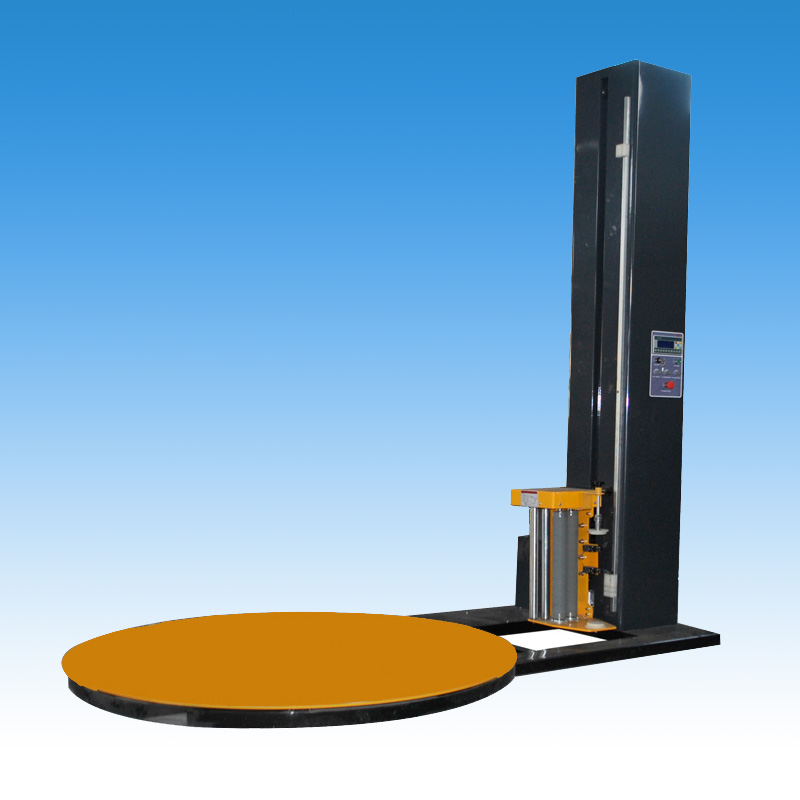Optimizing Logistics: The Engineering and Economics of Pre-Stretch Pallet Wrapping Machines
In modern warehousing and logistics, efficient and secure palletization is paramount. The pre-stretch pallet wrapping machine represents a significant technological advancement over manual or conventional wrapping methods, offering substantial improvements in material efficiency, load integrity, and operational throughput. This equipment is engineered to optimize the use of stretch film, a critical component in securing goods for transit and storage.
Understanding Pre-Stretch Technology
At its core, a pre-stretch pallet wrapping machine utilizes a specialized film delivery system, often incorporating patented roller configurations, designed to elongate the stretch film before it contacts the load. This mechanism typically involves two rollers rotating at different speeds – the second roller spinning faster than the first – stretching the film between them.
Key Principle: By stretching the film close to its ultimate breaking point under controlled tension, the inherent elasticity and strength properties of the Linear Low-Density Polyethylene (LLDPE) film are maximized. Research in polymer science and packaging engineering confirms that this pre-stretching process aligns the film's polymer chains, significantly increasing its tensile strength and load-holding capabilities.
Common pre-stretch percentages range from 150% to over 300%. A 250% pre-stretch ratio, for example, means that 1 meter of film exiting the roll becomes 3.5 meters of film applied to the load (1 meter original + 2.5 meters stretched). This translates directly into reduced film consumption per pallet wrapped.
Operational Workflow and Key Components
The operation involves several key stages facilitated by the machine's primary components:
- Loading: The palletized load is placed onto the machine's turntable.
- Film Attachment: The stretch film is manually or automatically attached to the base of the load.
- Wrapping Cycle Initiation: The operator starts the cycle via a control panel (often a PLC - Programmable Logic Controller - interface).
- Turntable Rotation & Carriage Movement: The turntable begins to rotate at a pre-set speed (RPM). Simultaneously, the film carriage, holding the film roll and the pre-stretch assembly, travels vertically along a mast.
- Film Application: As the carriage moves up and down, the pre-stretched film is applied evenly around the rotating load, creating overlapping layers for secure containment. Top and bottom wrap counts, carriage speed, and turntable speed can usually be adjusted for different load profiles.
- Cycle Completion: Once the programmed wrap cycle is complete, the film is cut (manually or automatically), and the wrapped pallet is ready for removal.
Core Components:
- Turntable: Supports and rotates the load. Capacity is rated by diameter and maximum weight.
- Mast: The vertical structure supporting the film carriage. Determines maximum wrapping height.
- Film Carriage: Houses the film roll and the critical pre-stretch roller system.
- Control System: Allows operators to set parameters like wrap counts, tension, speeds, and pre-stretch levels (if variable).
- Pre-Stretch Rollers: The heart of the system, responsible for elongating the film.
Technical Specifications Overview
While models vary, typical specifications targeted by industrial purchasers often include:
- Maximum Load Size (L x W): e.g., 50" x 50" (1270mm x 1270mm)
- Maximum Load Height: e.g., 80" - 110" (2032mm - 2794mm)
- Maximum Load Weight: e.g., 4,000 lbs - 5,000 lbs (1814 kg - 2268 kg)
- Turntable Speed: e.g., 3-12 RPM (Variable)
- Film Pre-Stretch: Fixed (e.g., 250%) or Variable (e.g., 150-300%)
- Film Type: Machine-grade stretch film
- Film Width: Typically 20" (500mm)
- Power Requirements: e.g., 110V/1/60Hz or 220V options
- Control Interface: Push-button or touchscreen PLC
Quantifiable Benefits Driving Adoption
The adoption of pre-stretch technology is driven by compelling operational and economic advantages, frequently cited in logistics publications and supplier case studies:
- Significant Material Cost Savings: By maximizing film yield, pre-stretching can reduce film consumption by 50% to 75% compared to hand wrapping or machines without pre-stretch capabilities. This directly impacts operational expenditures.
- Enhanced Load Containment: The consistently applied, high-tension film provides superior load stabilization. This minimizes product shifting and damage during handling and transportation, reducing costs associated with returns, claims, and unsaleables. Industry research consistently links proper load containment to reduced transit losses.
- Increased Throughput: Automated wrapping cycles are significantly faster and more consistent than manual methods, boosting the number of pallets processed per hour and optimizing labor utilization.
- Improved Safety: Automating the wrapping process reduces the physical strain and ergonomic risks (bending, walking backward) associated with manual wrapping, contributing to a safer work environment.
- Operational Consistency: Machine application ensures every pallet is wrapped according to pre-defined parameters, eliminating variability inherent in manual processes and ensuring packaging standard compliance.
- Sustainability: Reduced film usage translates directly to less plastic waste, aligning with corporate environmental responsibility goals.
Applications Across Industries
Pre-stretch pallet wrappers are indispensable in a wide range of sectors requiring efficient bulk goods handling:
- Distribution Centers & Logistics: High-volume pallet movement necessitates speed and reliability.
- Manufacturing: Securing finished goods from production lines for warehousing or shipment.
- Food & Beverage: Ensuring stability and hygiene for palletized goods.
- Retail & E-commerce: Preparing bulk shipments for store replenishment or fulfillment centers.
- Pharmaceuticals: Maintaining load integrity for sensitive products.
- Construction & Building Materials: Wrapping heavy or irregularly shaped loads.
Conclusion: A Strategic Investment
The pre-stretch pallet wrapping machine is more than just packaging equipment; it's a strategic investment in operational efficiency, cost reduction, and product protection. By leveraging engineered film elongation, these machines offer a quantifiable return on investment through substantial savings in consumable materials and labor, coupled with the invaluable benefit of reduced product damage during transit. As highlighted in industry resources like Industrial Equipment News, adopting such automation is key for businesses seeking to optimize their supply chain performance and maintain a competitive edge.


